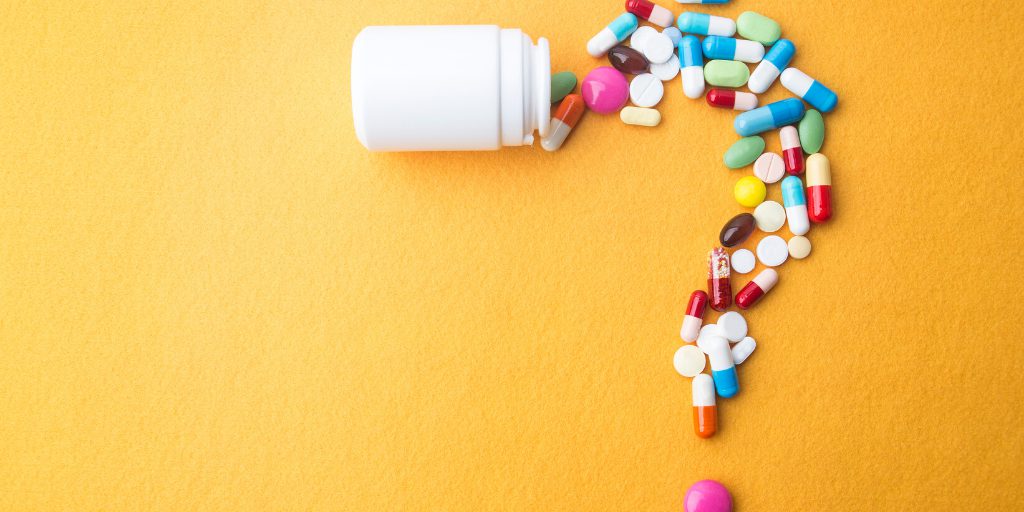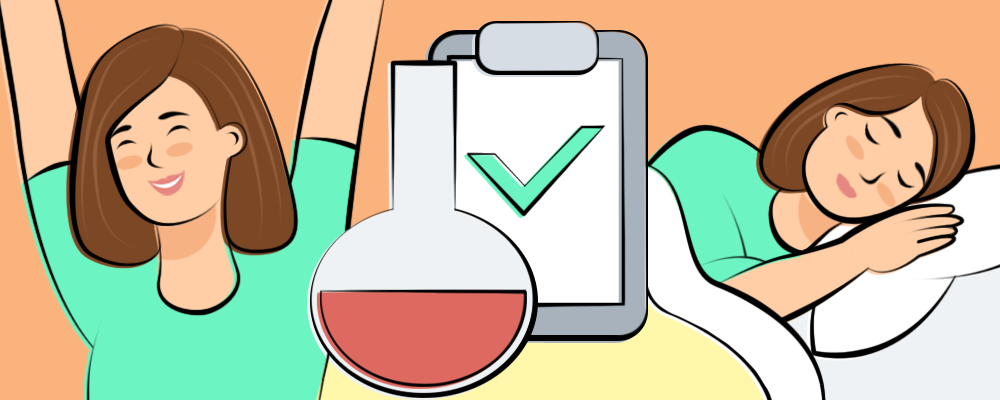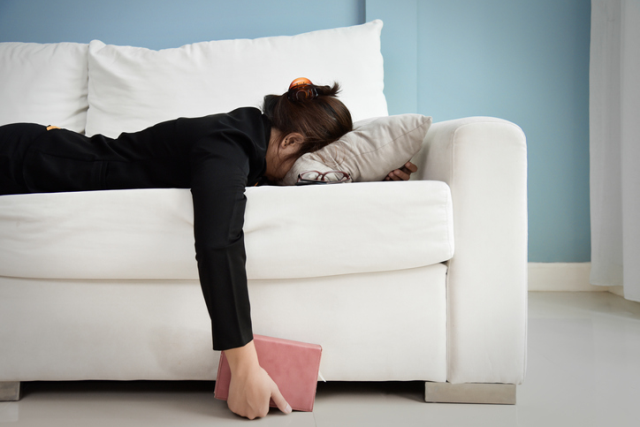For women who suffer from menstrual migraine, the “time of the month” can be an almost unbearable experience.
A menstrual migraine causes exactly the same symptoms as other migraines — headaches, nausea and sometimes aura symptoms such as seeing flashing lights, or having blind spots in your vision.
What makes a menstrual migraine different is its trigger.
As you might expect, a menstrual migraine is set off by the hormones involved in the menstrual cycle. For this reason, you might also hear of it referred to as a hormonal migraine, too. Menstrual migraines usually happen around the time of the month when your period starts.
Who suffers from menstrual migraine?
Women are 3 times more likely to have migraines than men. But migraines aren’t always menstrual.
That said, around 60% of women who experience migraines say that their symptoms follow the pattern of their menstrual cycle, occurring at any time from puberty to menopause — and possibly beyond!
Some women may experience their first menstrual migraine in their teens, at the same time as their first periods. These two experiences happening together can have a traumatic impact, but understanding what is happening can be the first step towards finding relief.
In other cases, women may not experience menstrual migraine until they reach the perimenopause: the transition into the menopause.
At this stage, the ovaries produce less estrogen than they did previously, which can make the effects of hormonal changes at the start of a period more pronounced than usual.
Even after the menopause has happened, cyclic hormonal changes can still occur for a few more years. These changes are no longer big enough to cause periods, but they may still set off a menstrual migraine.
What causes menstrual migraine?
Menstrual migraine is thought to be caused either by a drop in the level of the hormone estrogen, or by the release of prostaglandins (naturally occurring fatty acids which act in a similar way to hormones).
Just before a period starts, estrogen levels drop. And, as estrogen receptors are found throughout the entire nervous system, some experts believe the sudden lack of estrogen causes an increase in the activity of pain networks and a decrease in headache prevention. In the first couple of days of a period, prostaglandins are released — prostaglandins are what we have to ‘thank’ for menstrual cramps, causing the uterus muscles to contract. This contraction can also increase the activity of pain receptors in the brain, leading to headaches.
Women who experience menstrual migraine are thought to be particularly sensitive to these normal hormonal changes during the menstrual cycle, hence the triggering of a migraine.
When does a hormonal migraine occur?
Menstrual migraines tend to strike around the start of a period. However, this isn’t the case for everyone…
Migraine before or during a period
Women often experience menstrual migraine in the two days before a period starts, or in the first three days of a period.
Keeping a diary of your menstrual cycle and your migraines can help you, and your doctor, to identify whether your migraines are menstrual. It’s a good idea to keep a diary for at least three months, to give you a chance to see whether a pattern exists.
Migraine at other times in the menstrual cycle
It is possible for migraines to be triggered by a variety of changes associated with your menstrual cycle, other than the drop in estrogen and release of prostaglandin which occurs at the beginning of a period. For example, you may experience a PMS craving for sugar or alcohol — but feeding these cravings may, unintentionally, trigger a migraine attack to take place. Or, you may find yourself more susceptible to stress or sadness at certain times during your cycle, and emotions like these could cause a migraine to take hold.
Migraine after a period, or at other times in the menstrual cycle, may not be defined as ‘menstrual’ but understanding how your migraines coincide with your cycle can still help you and your doctor come up with an effective plan for managing them.
Migraine in pregnancy
Unfortunately, some women do continue to experience menstrual migraines when they are pregnant. This is due to estrogen levels rising rapidly in the first trimester, and remaining high throughout the full term.
Some good news though: while estrogen levels are steady (usually after the third month of pregnancy) menstrual migraines often improve or even disappear. But after delivery, estrogen levels drop abruptly, so women who suffer from menstrual migraine can find that they recur at this time.
How to find relief from menstrual migraines
Regular migraine treatments
Treatments which relieve the symptoms of migraine (such as pain relief and anti-vomiting medications) can be as effective in treating menstrual migraines as they are in treating migraines which result from other triggers.
Non-pharmaceutical treatments, however, can also be useful, too.
You can also try resting in a dark, quiet room and perhaps applying a cold cloth to your head or neck. Some people find that gentle exercise can also help with migraine, too — relaxing exercises like yoga can be especially useful.
Hormonal migraine treatments
Of course, there are a number of treatment options specifically designed to alleviate hormonal migraine symptoms.
For example, some women find that their symptoms are reduced when they take hormonal contraceptives, like the pill. Unfortunately, however, other women can find that they develop migraines whilst taking these contraceptives. Always speak to your doctor before using contraceptives to manage migraines, and keep your doctor updated if your conditions change.
You may find that your doctor suggests using hormonal medications, to steady your estrogen levels throughout the menstrual cycle. If you’re using a contraceptive pill, this may mean reducing, or eliminating, placebo days (days when no estrogen is taken). A pack with fewer placebo days or an extended cycle combined pill (which doesn’t involve placebo days each month) can also be used.
During placebo days, your doctor may recommend that you wear an estrogen patch.
Alternatively, hormonal contraceptives which use a lower dose of estrogen can be taken. These can result in less of a drop in estrogen during placebo days. If this isn’t right for you, the mini pill, which is progestin only, may also be suitable.
Finding the answer to your menstrual migraine
Periods can be trying enough, without the added pain and discomfort of menstrual migraine. But, thankfully, there are many treatment options available, from those which can relieve migraines triggered by any cause, to hormonal medications which may help to reduce the specific triggers of menstrual migraine.
We hope our guide today helps you to find your way to the relief you need. And for more content on migraine symptoms, triggers and treatment, check out our blog for advice and possible solutions on how to overcome the pain.




